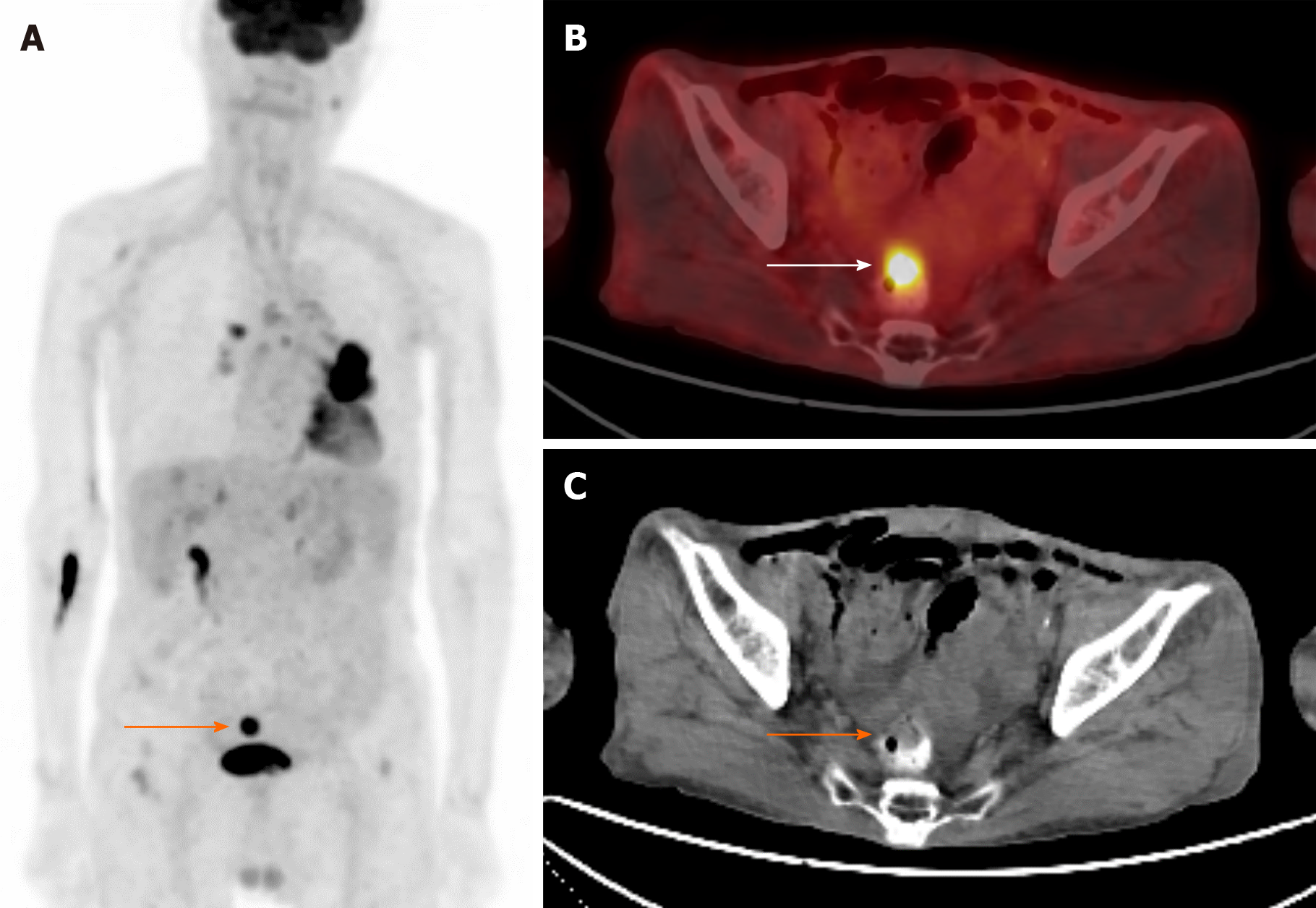Copyright
©The Author(s) 2024.
World J Clin Cases. May 26, 2024; 12(15): 2466-2474
Published online May 26, 2024. doi: 10.12998/wjcc.v12.i15.2466
Published online May 26, 2024. doi: 10.12998/wjcc.v12.i15.2466
Figure 3 Focal intestinal fluorine-18 fluorodeoxyglucose uptake.
A: Maximum intensity projection depicting focal hypermetabolism superior to the urinary bladder (arrow) in an 88-year-old man diagnosed with non-small cell lung cancer; B: Axial view revealing focal hypermetabolism localized in the rectum; C: Non-contrast-enhanced computed tomography obtained from positron emission tomography/computed tomography, highlighting a space-occupying lesion within the rectum. Notably, a discernible posterior radioopaque area suggests the presence of residual contrast material from a prior contrast-enhanced examination. Subsequent colonoscopy and pathological analysis definitively identified the lesion as adenocarcinoma originating from the rectum.
- Citation: Lee H, Hwang KH. Focal incidental colorectal fluorodeoxyglucose uptake: Should it be spotlighted? World J Clin Cases 2024; 12(15): 2466-2474
- URL: https://www.wjgnet.com/2307-8960/full/v12/i15/2466.htm
- DOI: https://dx.doi.org/10.12998/wjcc.v12.i15.2466









